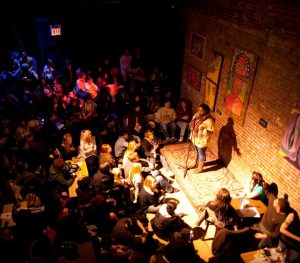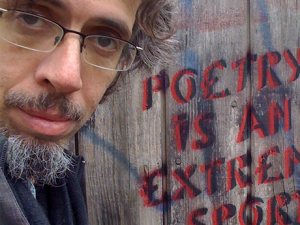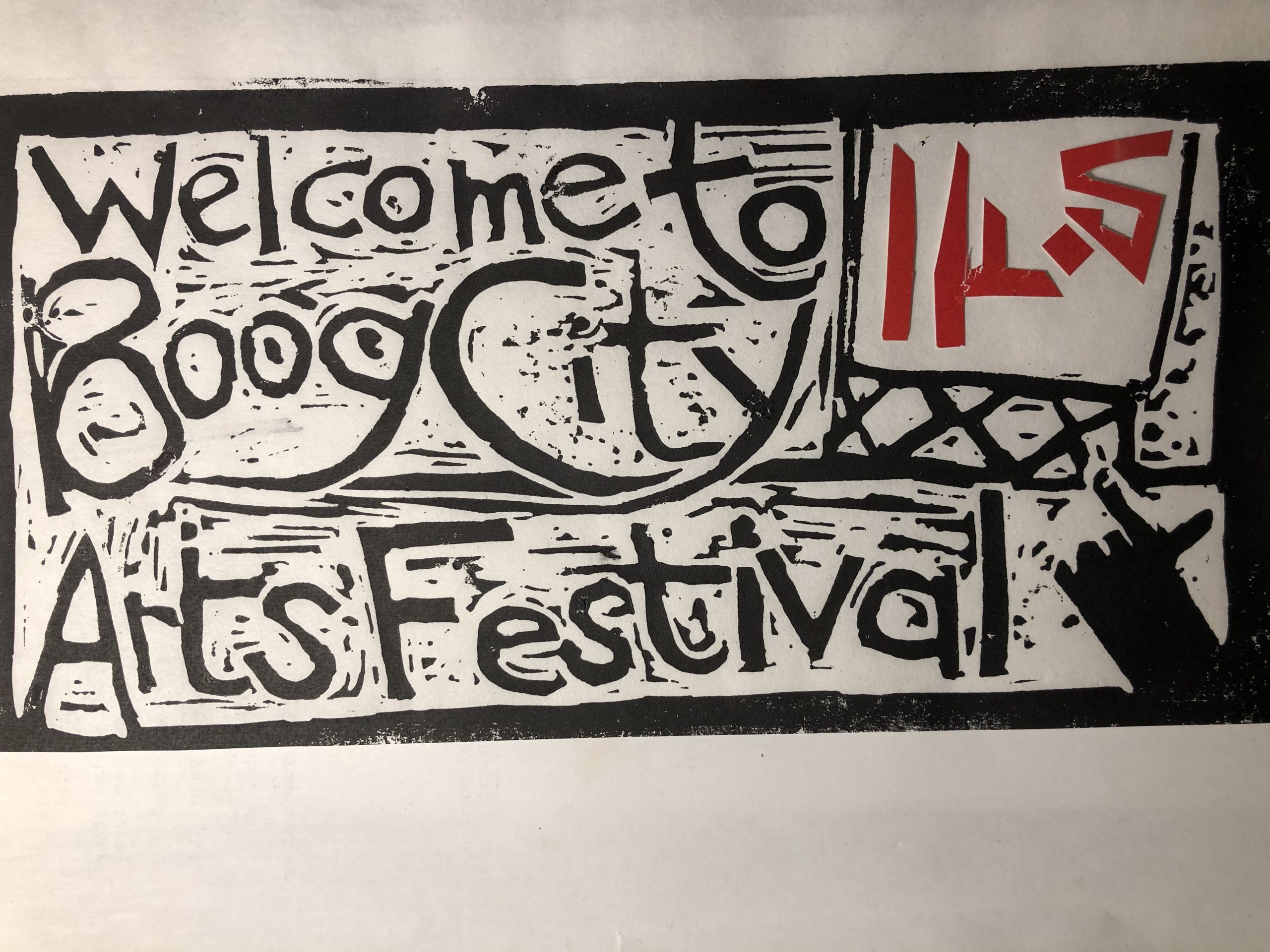by Edwin Torres
“A new day needs a new language or else the day becomes a repetition of yesterday. Invention is not always a straightening up of things. Oftentimes the newness disrupts. It causes chaos.” —Miguel Algarín, from the introduction to Nuyorican Poetry: An Anthology of Puerto Rican Words and Feelings
I.
My gratitude to Boog’s illustrious capitan, David Kirschenbaum, for the invitation to write something about Miguel Algarín, co-founder of The Nuyorican Poets Café — whose legacy in the Puerto Rican diaspora formed a bridge between many cultures during a time of systemic upheaval for New York-born Puerto Ricans and other-versed poetries, pre-slam/beyond-slam.
Miguel was a close connection to my formative underpinnings as a poet, so I thought I’d see, in this brief essay, what happens when my role as student/poet/witness spills over from previous memory to active integration — that is, how to make present what becomes through time, “a bilingual reality, so that survival Spanglish and literary translanguage meet,” as Urayoán Noel states expansively in his phenomenal book, In Visible Movement: Nuyorican Poetry from the Sixties to Slam (University of Iowa Press).

Looking at the kinetic charge brought about by the other writing of otherness — what I picked up from my interest in process-making as poem-making — the writing experience found in hybrid culture, specifically Latino, specifically Puerto Rican, specifically Nuyorican writing, is a rich tapestry worthy of dissemination, something I’m just alighting upon here, in this text. All to say, my placement of Miguel Algarín within this fabric of other and form, is a mere touchstone brought from the street, my street, on 4th and First Ave (where I lived when I found the café as emerging cocoon poet) as relates to his, on 3rd Street and Ave C, the Café’s third home. After his living room and after the bar on 6th Street, the Café landed on 3rd Street, and with it, a Nuyorican consciousness for inclusion as change.
II.
My view of the neighborhood as a movement, is a nuanced complexity of the hybrid Latino gaze, pre-Latinx/beyond-X. Hybrid for me, is a reality between the academy and the street, a territory that Miguel located in 1975 as “Nuyorican Village, New York City,” his sign-off, right there, at the end of the intro in the anthology, as if poetry had its own zip code.
“The impulse to create a language that can absorb aggression without fantasy thrives among people who are in situations of extremities,” from that same iconic introduction. To absorb “aggression without fantasy” is a strong blue-collar ethic. Considering the time of the Café’s appearance, pre-hashtag/beyond-island, when living conditions, pre-Loisaida/beyond-Bimbo Rivas, were manifest by ghetto reality — it becomes easier to appreciate the troubadour instinct of a visionary’s spirit for education from street to language.

“Two languages coexisting in your head as modes of expression can either strengthen alertness or cause confusion. The streets resound with Spanish and English. The average Nuyorican has a working command of both and normally uses both languages simultaneously. Ordinary life for the Nuyorican happens in both languages. The factory laborer reads instructions in English but feels in Spanish. Thus he expresses responses to the conditions of his environment in Nuyorican. The standardization of a street-born language is always perilous and never easy.”
Algarín is claiming the language of the new(yo) as that of a new creature to dissect/understand/put up with, in the scope of a fractured city. Multi-hyphenates were not given play back then, speaking more than one language was not the big deal, but to own your identity as your own ethnicity, was gangsta. The original insult of newyorican reclaimed to absorb myth as Nuyorican, was a bold maneuver of other as now.
Operating on verse as other, I would re-invent that scenario as claiming poetry itself as new(no) language — taking my specific viewpoint of a body-centered poetics, since evolved, out of the porous search to fit in — within the bridges we invent over the course of our lifetime. In other words, poetry is the hybrid communication for the language between selves, between planes, between locations of search and loss. Miguel says something powerful along this context, in a Youtube interview I chanced upon…rabbit-hole Boricua style — the levels of inner-salsa governing endless elocutions of what you’re trying to say, using meta-salsa algorhythms, are modern holiness.
The video is from a reading in 2013 at the Inaugural Conversations on Art & Poetry in Atlanta, Ga. Concerning the Café’s early existence, Miguel is recounting a time when a young girl arrived and fainted on the floor, she was attended to, and on her own, came to the front of the stage, and told the audience how she’d just been molested by her father, thrown out of her home by her mother, amid accusations of seducing her father. Which led the gathered poets to a streak of poems on abuse that night…he says, “we provided the space, she provided the horror,” and how “poetry’s business is not about beauty, poetry exists because we’re in pain.” Many nights at the Café, I would be transported by like-minded saviors in a safe place, inside that bricked-in room, where I learned how to allow beauty its place in pain. Trust allows vulnerability its place, what a poetry venue creates over its lifetime is a charged enveloping, a holding where we gather our searches, not for solutions but like-minded questions.

In our current Zoom spaces, community takes on a different meaning as our homes are each other’s homes and we ask for that shared enveloping to redefine what home means, which in itself, is a fractured reality – can language happen freely if I’m stuck inside my freedom? Which opens another realm of questions about inclusion, a separate parallel to this essay.
It’s a lifeblood that can’t be taught unless lived, the experiential qualities of a performed poetry are only as relevant as the lived experience of the audience hearing it. The hearing is in the catching, the hearing is in the living, of the language being heard. As the poem moves on the page to find its contour, somatic rituals unfold between the lines — the reader’s choice, to embody the porosity being shared, is something of instinct and absorption. It’s the other-verse culture, a deepening of Marjorie Perloff’s “official verse culture,” which lets language find, beyond the litmus of arousal, the form that best approaches the reader’s own other — a reciprocal gesture for those lifelong soul mates; reader and writer.
III.
The flesh of Algarín’s language; to find the trust in yourself to hear how you land on syllable, as the language navigates biology through an eco-poetics of formed lingual possibility. Where do you let the page in, the air out, where do you find the space that calls you, as you allow the calling its place, to protect and nourish the body’s continuum throughout the emotional terrains of lust, flesh, warmth — I’m just riffing here, give me my cosmological extraction steeped in revolution, to value this exacting moment between you and I, won’t you?
I found his book Body Bee Calling from the 21st Century years after we met and was astonished at how much my eventual poetic arc found commonality in his — no doubt, he heard, what I didn’t, when he knew to hear!
Transit (from Body Bee Calling from the 21st Century)
Releasing molecules,
atomic separation,
body holding on, at times splitting apart
in a tug of war between acid/alkaline
chemical stages seeking new balances,
calling zero to seven acid to keep
seven to fourteen alkaline in check,
producing a chemical mixture that feels,
calling for structural re-alignment
of acid/alkaline sentience,
corporeal, sensory mixture,
going up or down the old ancient question
of chemical extremes upsetting, usurping the pulse,
calling for atomic separation
of variant chemical paste base,
calling for a reassembling
to build a new mystery.
I think of the music happening around that time, how the shape of the revolution Miguel was championing through this new creature, The Nuyorican, was an opening into/out of sound. Afro-Cuban Jazz, Sun Ra, Grupo Folklorico, Eddie Palmieri, Donald Byrd, Albert Ayler…dissonance of the upper lower registers absorbed by the oral tradition. Lonnie Liston Smith, Brass Construction, Conjunto Libre, bass lines driving the brass with strings as atmospheric viscosity. What fabric in the timeline of humanity is the answer driven past the point of its demise — a tangent of musicality where Miguel takes an island and broadcasts to the world that we are in the microcosm of our own idealized nation.
To nurture that flesh as a neighborhood, takes a stellar degree of vision and faith…in your surroundings, in your own mobility, in your intellect. The idea is to find the rhythm in the rhythm you yourself write, as if you had not written it, yet, but discovered, for the first time, the rhythm you write as you read it, pre-po/beyond eco, fingersnap-chevere!
IV.
YouTube wasn’t around when the Nuyo made a name, when spoken voice slammed into the walls, there were no iPhone recordings, no easy quick theft of magic, it was all oratory fable-ism…did you check out Willie last week, can you believe Dana, Dael, Paul…and that was my era, before that…can you believe Mikey, Lucky, Pedro!
The Nuyorican Poets Café was a weekly church for us emerging word-people, there on the Lower East Side in the early ’90s, a Loisaida of the mind, though technically it was The East Village. I seem to remember an imagined territorial riff, though we all went everywhere down there during those days. I survived the symbolism of my twenties and came to poetry in my thirties, late in a troubadour’s life, yet, on time, though learned that age was just a number made of many languages. I had my tiny studio apartment, two cats, and newly tapped creative dam burst open by poetic possibility.
My entry into Nuyorican poetry was not out of desire for identity, the café was two blocks away from where I lived at the time, my weekly Friday night ritual was a few blocks away. I was writing about language more than place, eventually the Café helped me see that I could write about both. The Nuyorican narrative that I added to my own, from Miguel and Bob Holman (the other end of my Café lifeblood) is that an immersive being who understands education as an endless landscape for language, will know humanity’s terrain in complexity and love — a profoundly basic lesson, that took me years to glean from, as we define education from the life we live.
“The academy is fed by the streets, there is no issue.” Algarín states in this same interview from 2013, “When I taught Shakespeare I point to the kids and say, don’t read Hamlet as if we were studying philosophy…you see a man hurt by his mother…hurt by his father’s death…hurt by his uncle’s betrayal…this, you all live. The kids would look at me crazy and then come back and say, yeah, it’s what’s happening between my uncle, my mother, my father,” concluding with an eternal nugget, “Great art is as simple as anything can ever be, what we have to do is, don’t treat it as exceptional…treat it as I need it.”
Miguel brought me to Rutgers once a year for about six years, to his Shakespeare class. He loved teaching and performing, and brought many of us to his students, knowing the power of shared contact among the Nuyo generations. His class was a chance for him to not only dive into language, but to perform theater for an audience. He would recite with flourish, then stop and ask the class…”see what I did there, tell me what I did”…a teacher through and through. I would perform my own language work and Miguel knew how to steer it towards that day’s lesson.
The honorarium would be the hours spent with him that day, and an expensive Italian lunch, which I gladly accepted. We would usually have his chosen restaurant, near the school in Jersey, to ourselves as lunch hour had passed by this point. The owner, the bartender, the maitre’ d, they all knew him as he would announce his own arrival to the empty room with full throat, “We’re Here!” Sometimes a friend of his would join us for the appetizer, pushing a random poem for a quick workshop, while drinking my Single Malt aperitif. It was during one of these lunches that Miguel showed me a journal he’d been writing, what became his book Love is Hard Work. He told me he was writing it page by page, “like a real book,” giving me a quick insight to process but also to expectation…you were a poet, a writer, your work exists in flow, think that way, understand your dynamic…basic lessons that inform your confidence. He would then drive me back home to the city, zooming past speed limits on wine and poem.
V.
Back to the ecopoetics of a diaspora — shapeshifting regime, on point — from the anthology, Letters To Poets: Conversations about Poetics, Politics and Community, Brenda Iijima writes:
“If a human were to be inserted into a metal cube that had a breathing and speaking vent the thingness of the cube would tell very little. Thingness can’t realize absurdity. Conscious energy abounds and is not limited to humans. Non-human energy is not so easily aggregated, so is useless in a capitalist system, therefore escaped excessive scrutiny through the symptoms of ecological destruction are felt. I guess this is what is referred to as primitivism. The way way back exists in the present — in fact, there is a way in which everything is the same (comprised of) time, the same age.”
We’re scattering our change over the same continuum, the humanity of our thingness is a fleshed encounter once we feel it, hear it, sense it, as poets but more as newness. That New Thing between languages that’s been around since ever. The insistence of new to exist in its time frame, a nod towards territory and place and thingness, expanding the origin of selfhood as worth, would be a direction for home.
A note here on lineage, with the passing of another Loisaida icon, what is it about that neighborhood that spun so many cultural moments out from its center? From Bird to Punk to the Performance Art scene to the Café, I expect much has been written about that already…and yes, it’s a shadow of itself now, but what neighborhood anywhere in the world during this time of social media…could possibly invigorate the imagination as much as the boilerplate stew of immigrants that pushed each other into such cataclysmic friction? It’s also a matter of physicality, the actual walking of the streets before texting, before Instagram, before corporate academy infringed on street academy — the actual experience of our lives being brushed against each other’s bodies, out there, on the stoop…is so much more impactful than a swipe on a glass screen. And yes, we know that already…maybe as the cultural shift is upon us and as we see what it is that we have and what we’re losing, our perspectives align and we get a better angle on what we’ve lost.
The tendency for a spoken orator is to speed through breath, to skim over the liminal heartbeat of the poem, so you can finish, and get off the mic — a micro-shmear of the initial fright when first confronted by a room of humans listening to your every breath. Over time, you realize you have something to say and become more comfortable in that exchange. The seat of the poem is in your voice, inside the reach of your overflowing imagination — it is this feral engorgement into self as breath, “You gotta read from the balls of the poem baby,” that Algarín bequeathed onto me.
Manhattan had the island portoricans, la isla had the real PR’s — through my subjugated lens distilled for lineage, I have a faint memory of an evening with Miguel and Papo Colo at a Soho loft party, on some unknown weekend in my unknown early thirties, somewhere between Nuyo and clarity. Papo Colo founded the rebelliously legendary gallery Exit Art, a poet and performer of his own body-lived theater. I don’t know how I ended up as the third wheel on this nefarious date between these two titans of braggadocio, but I remember quick wit and bochinche amid spotlights of vertigo and floor squats. And far away yet closeup, there’s sort of a yellow light and something silvery that Papo is either wearing or drinking…how desire paints recollection when passing the layers of a lost weekend. How the receptive vehicle of an audience, in search of connection, is a root underpinning of the poem’s ability for presence.
from the end of “A Mongo Affair” by Miguel Algarín
I love you
I see in you
what has been
what is coming
and will be
and over your grave
I will write
HERE SLEEPS
A MAN
WHO SEES ALL OF
WHAT EXISTS
AND THAT WHICH WILL EXIST
 EDWIN TORRES’ poetry collections include The Animal’s Perception of Earth (forthcoming from DoubleCross Press), XoeteoX: the infinite word object (Wave Books), and is editor of the inter-genre anthology The Body In Language: An Anthology (Counterpath Press). He has performed his multi-disciplinary bodylingo poetics worldwide.
EDWIN TORRES’ poetry collections include The Animal’s Perception of Earth (forthcoming from DoubleCross Press), XoeteoX: the infinite word object (Wave Books), and is editor of the inter-genre anthology The Body In Language: An Anthology (Counterpath Press). He has performed his multi-disciplinary bodylingo poetics worldwide.

